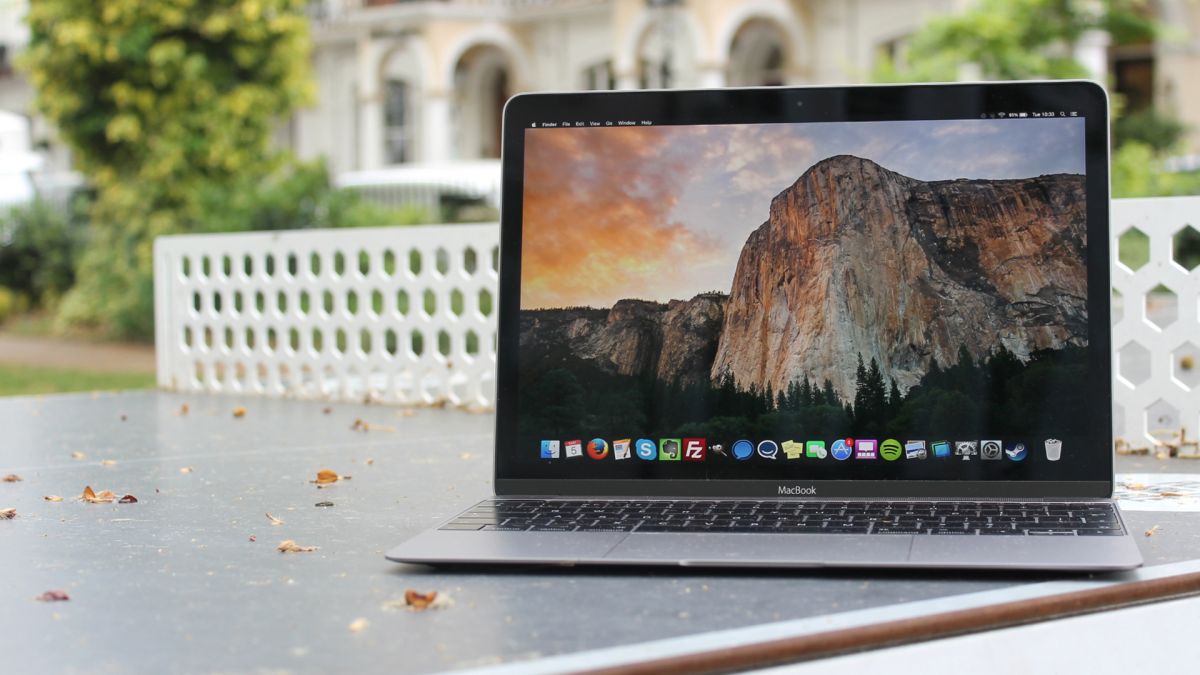
Introduction and design
Update: If you weren’t impressed with Apple’s latest back when it launched, check out these five reasons why you should reconsider the 12-inch MacBook today.
Original review follows…
Knock it for its USB Type-C port. Bash it for its wimpy horsepower. But don’t even try to deny that Apple’s new MacBook is one of the most attractive, impressively-engineered laptops that the world has ever seen – there’s simply nothing quite as slick out there.
Even though it combines the portability of Apple’s MacBook Air with the Retina MacBook Pro’s high pixel-density Retina display, the new MacBook doesn’t resemble either product line – or Apple’s older, polycarbonate white MacBook of the same name, for that matter.
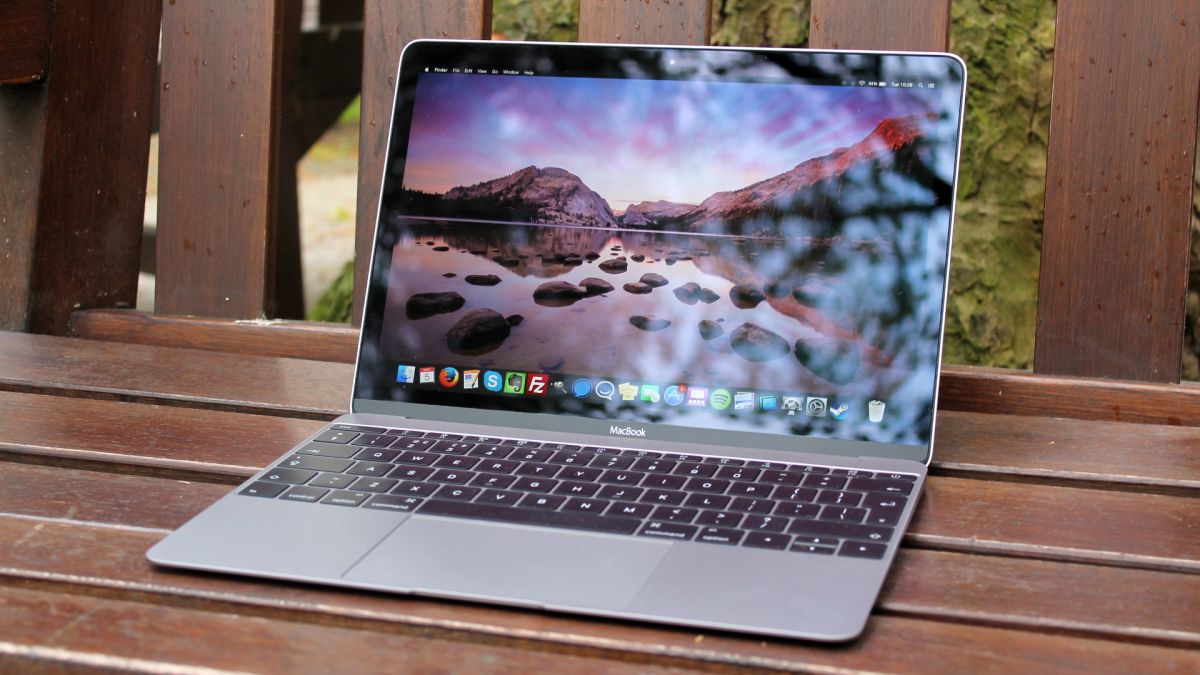
Instead, it feels like an entirely new species of otherworldly laptop that has more in common with an iPad Air than a ThinkPad. Flip open the lid, and you’re transported into the best-looking OS X Yosemite playground yet – one that goes wherever you go.
But it’s far from perfect: the new MacBook’s sole USB Type-C port and moderately-powered Intel Core M processor mean that many of this playground’s games are off-limits, and while some will find its unique keyboard more fun than a revolving roundabout, it will make others sick with frustration.
Divisive and sickly sweet, the new MacBook is the notebook equivalent of Marmite. Personally, I love the stuff (and like the new MacBook a lot), but whether it’s for you depends on how much you’re prepared to compromise.
Recent developments
Want one of these but aren’t prepared to plunk down quite this much? Apple is now selling refurbished 12-inch MacBooks for a rather sizable discount (at least relatively) in the UK and US.
The entry-level, refurbished 12-inch MacBook goes for a much lighter £889 – 15% off, to be exact. The model packing a 1.2GHz CPU, 8GB of memory and a 512GB flash storage drive goes for £1,099 refurbished, a saving of £200.

In the US, the low-end model carries a $1,099 price tag when refurbished (a $200 discount), and the 1.2GHz model calls for $1,359 ($240 cheaper than it normally sells for) after being prepped for re-sale.
Of course, your chances of scoring a refurbished MacBook depend entirely upon what Apple has in stock in either region, so your milage may vary on this one.
But, if you’re looking out for savings on a brand new MacBook, check out our page for the best cheap MacBook deals for February 2016. You’ll find deals on just about every other MacBook model there, too.
Also, for those growing bored of OS X El Capitan, Apple issued a new beta version of the operating system recently, allowing you to play with new features before they make it into an official update. So long as you’re enrolled in the Apple Beta Software Program, you can now enjoy toying with password-protected notes and throwing Live Photos directly into Messages.
On the catwalk
Two qualities stand out above all else when it comes to the new MacBook: thin and lightweight. Apple has managed to squeeze its components into an incredible aluminum body that measures just 0.35cm at its thinnest point and 1.31cm at its thickest.
Its thinness is in part due to Intel’s fan-less Core M CPU, which is passively cooled and runs whisper quiet. There’s no fan inside, which enabled Apple’s engineers to make its chassis slimmer. The new MacBook is an ideal option if you’re frequently sharing a room with light sleepers – particularly compared to noisier, fan-based notebooks sporting Intel’s Core-series chips.
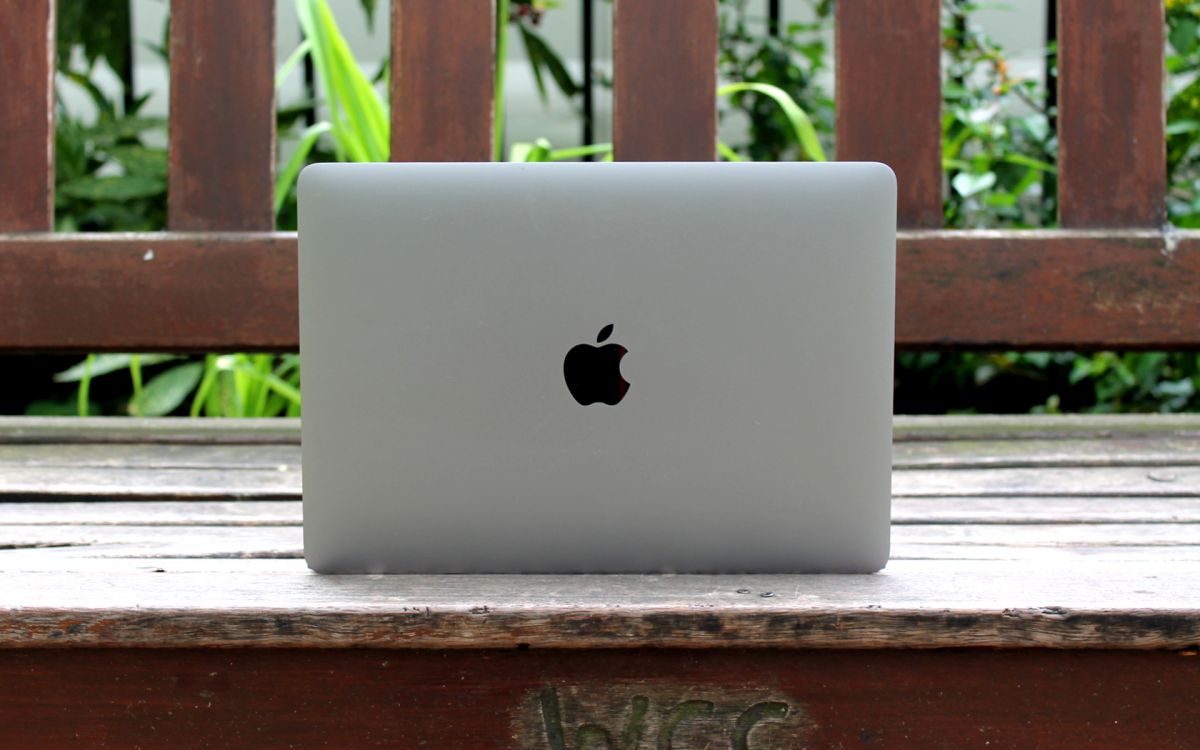
Another factor that’s helped Apple achieve the new MacBook’s svelte dimensions is its dramatically thinner keyboard, which uses an Apple-designed butterfly mechanism instead of a traditional scissor type underneath the keys.
And while we’re on the topic of thin, the new MacBook’s bezel is slimmer than ones on previous MacBooks and is complemented by a matte strip along the bottom that bears the MacBook logo. It’s available in three colors: Space Grey, Silver and Gold.
Cost and competition
Everything about the new MacBook’s design screams premium, which is what you’re shelling out for at the end of the day – you can almost forget what’s housed inside.
Of course, we’ve been here before. The original MacBook Air, which was more portable than other notebooks at the time but came with fewer ports, cost an arm and a leg when it first came out – and history has repeated itself with the new MacBook.
Starting at £1,049 (US$1,299 or AUS$1,799), the entry-level MacBook comes with 256GB of flash storage and is powered by a 1.1GHz (Turbo Boost to 2.4GHz) dual-core Intel Core M flash storage, 8GB of RAM and Intel HD Graphics 5300. Rising to £1,299 (US$1,599 or AUS$2,199), the top-end model comes with a slightly faster 1.2GHz chip (Turbo Boost up to 2.6GHz) and 512GB flash storage.
![]()
The nearest alternative price-wise is Apple’s less portable but more capable 13-inch MacBook Pro with Retina that starts at £999 (US$1,299 or AUS$1,799). That gets you a 2.7GHz (Turbo Boost to 3.1GHz) dual-core Intel Core i5 CPU, 8GB of RAM, 128GB flash storage and Intel Iris Graphics 6100.
If you’re not too bothered about a Retina display, the top-end 13-inch MacBook Air costs the same price and comes with a 1.6GHz dual-core Intel Core i5 CPU (Turbo Boost up to 2.7GHz), Intel HD Graphics 6000, 4GB of memory and 256GB flash storage.
If you’re in the Windows camp, the number of Core M-powered alternatives are growing all the time. Of those, the Lenovo Yoga 3 Pro, Asus T300 Chi and Asus UX305 share the new MacBook’s traits of slimness and portability. (Plus, it’s aligned rather closely in terms of power with the Surface Pro 4.)
Joe Osborne also contributed to this review
Specifications and features
While the 13-inch MacBook Air (which weighs 2.96 pounds) never exactly felt unwieldy in the hand, being almost a pound lighter means that the new MacBook (2.03 pounds) is on a different level of portability.
The difference in weight between the 11-inch MacBook Air (2.38 pounds) is more subtle; while it’s noticeable holding each device in a hand, you’re unlikely to tell the difference between the two when they’re slung into a backpack.
Taking a peek at the new MacBook’s Windows 8.1-powered contenders, the Asus UX305 (2.64 pounds) and the Yoga 3 Pro (2.62 pounds) lie somewhere in-between the new MacBook and the 13-inch MacBook Air. The UX305 wins the gong for being the model with the lowest height, measuring 12.3mm, followed by the Yoga 3 Pro’s 12.8mm.
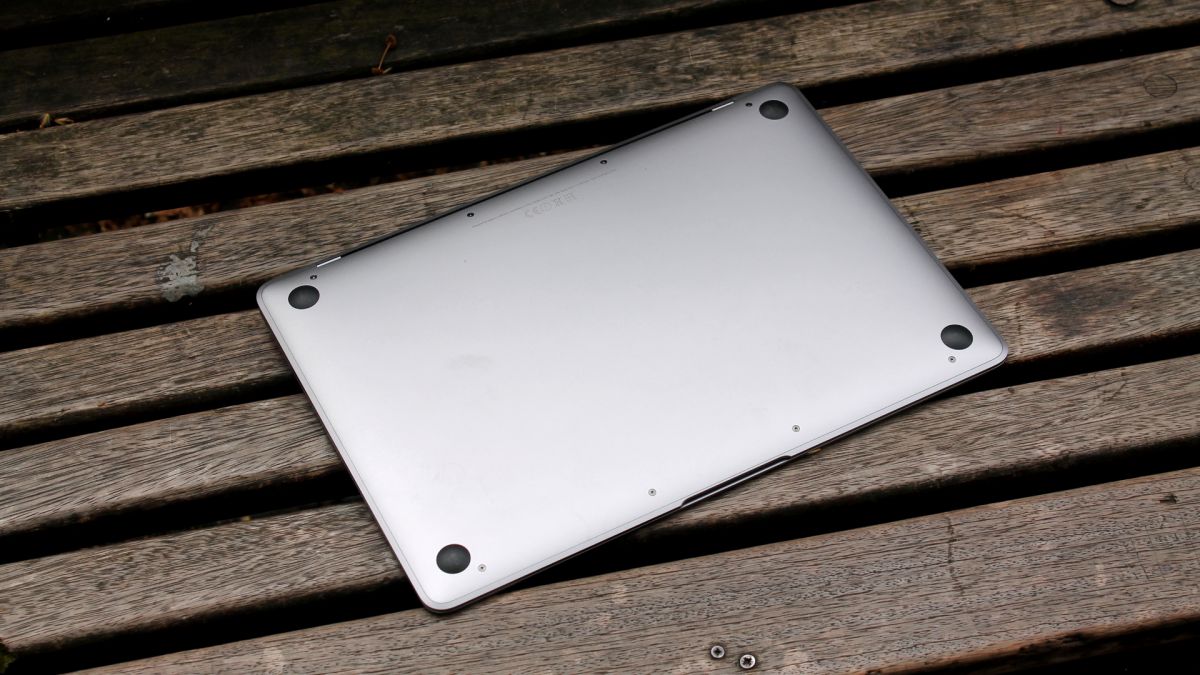
Although the new MacBook is a whisker taller than the Yoga 3 Pro at 13.1mm, that’s when measured from the tallest point at the back. Thanks to its tapered design, it measures just 3.5mm at the front and is easy to open with one hand thanks to a cutaway at the front.
At 280 x 197 x 13.1 mm (W x D x H), the new MacBook has the smallest footprint of the three, versus the UX305 (324 x 226 x 12.3), Yoga 3 Pro (330 x 228 x 12.8) and 13-inch MacBook Air (325 x 227 x 17mm), making it the clear winner if you’re a frequent traveller requiring that inch or two of extra space on the plane or train.
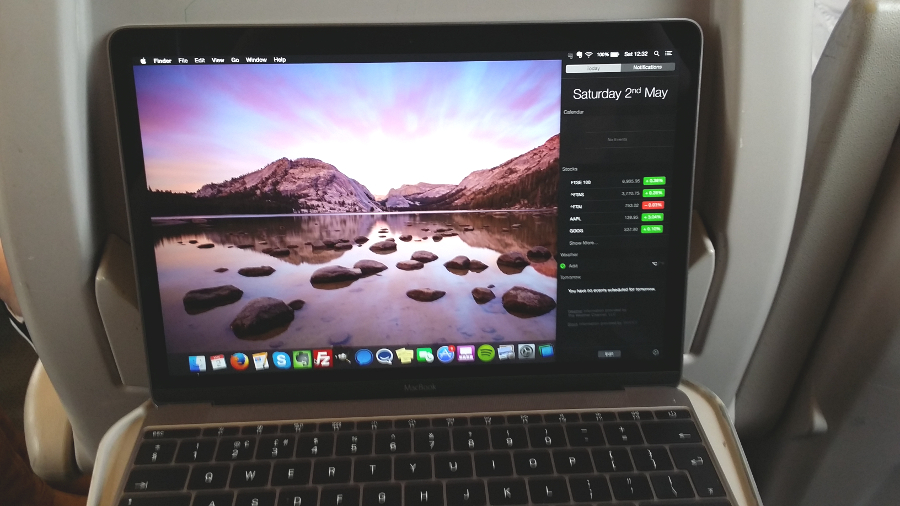
Here is the configuration of the review model supplied to TechRadar:
Spec sheet
- Processor: 1.1GHz dual-core Intel Core M (Turbo Boost up to 2.4GHz; 4MB shared L3 cache)
- Operating System: OS X Yosemite
- Memory: 8GB DDR3 (1,600MHz)
- Display: 12-inch LED-backlit IPS
- Graphics: Intel HD Graphics 5300 (video support up to 3,840 x 2,160)
- Storage: 256GB PCIe-based onboard flash
- Camera: 480p FaceTime camera
- Networking: 1/10/1000BASE-T Gigabit Ethernet
- Connectivity: 802.11ac Wi-Fi; Bluetooth 4.0
- Audio: Stereo speakers; Dual microphones; headphone port (support for Apple iPhone headset with remote and microphone)
- Dimensions: 28.05 cm / 0.35 – 1.31 cm / 19.65 cm (H x W x D)
- Weight: 0.92kg (2.03 pounds)
- Battery: Built-in 39.7-watt-hour lithium-polymer battery
Wave goodbye to full-size USB 2.0 ports, and the MagSafe adapters that juiced Apple’s old MacBooks, because both have been replaced with a single USB Type-C port on the new MacBook’s left-hand edge. The only other port is a headphone jack on the right-hand side.
That’s right: there are no other USB ports or video outputs to be found – including Apple’s own Thunderbolt port. The absence of MagSafe is also disappointing. It was nice to know that you could wrap your leg around the power chord without sending your MacBook flying into the air.

Unlike MagSafe, which came out easily (which was the whole point), the USB Type-C connector feels uncharacteristically snug. If we’re scraping the barrel to look for a positive, using the MagSafe adapter with the cord at full length meant that it had a tendency to fall out, whereas once a USB-C charger is inserted, it’s rock solid. Plus, like Apple’s Lightning connector it works both ways around.
Oh, forget it: let’s hope a USB Type-C MagSafe adapter is invented soon. (Wait, what’s that? One’s been finally made? Sweet!)

On a practical level, the change to USB Type-C is the bigger issue as it means that you’ll have to connect USB peripherals and monitors using a USB Type-C adapter, which Apple and other vendors supply. You can pick up a USB-C-to-USB-A adapter or a Multi-port adapter that lets you connect another USB-C device, a USB-A device and VGA or HDMI-equipped external monitor.
For writing this review, I used a USB Type-C Multi-port adapter with a VGA connection to hook up a 1080p monitor, inserting a USB mouse into the empty USB-A slot and hooked up the USB-C power supply to complete the adapter’s trio of connections.
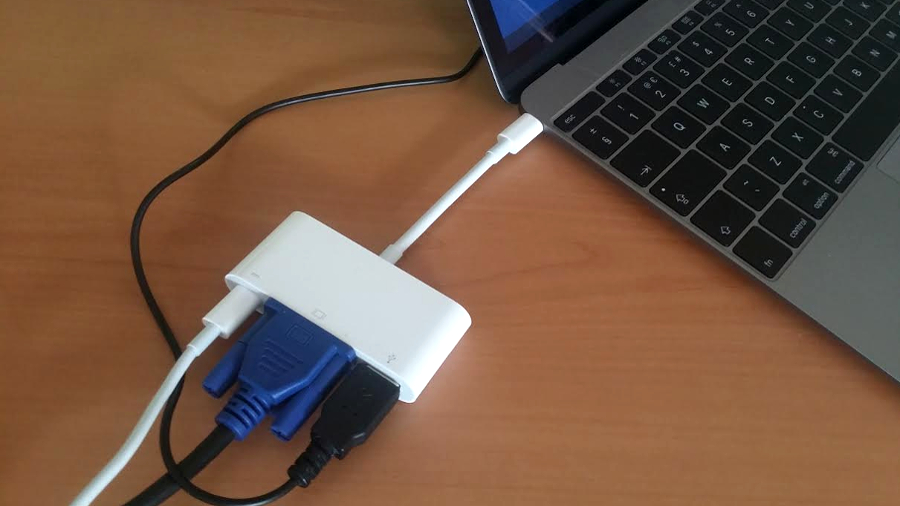
Did it annoy me? Well, not really. It felt tidy and practical and certainly wouldn’t prove a dealbreaker to buying a new MacBook. Of course MagSafe would be better, as would more ports, but it wasn’t quite the hair-tearing experience I was expecting. The obvious drawback is that the adapters aren’t free.
If you’re thinking about prying the new MacBook open and switching that pesky USB-Type C port for the old traditional one, well – you can’t. Sorry. In fact, the whole device is incredibly difficult to upgrade, as the guys at iFixit found out in their teardown, rating the new MacBook a measly 1 out of 10 for upgradability.
Bundled software
One of the positives of buying any MacBook is that it comes with a slew of free Apple software, most of which is of an excellent quality and far from the bloatware your might run into on Windows machines – and Apple’s apps look even better on the new MacBoo, thanks to its high-resolution display.
The 12-inch MacBook first shipped with OS X Yosemite back in spring 2015, and future upgrades are bound to be free. The next version of Apple’s desktop operating system, called OS X 10.11 El Capitan, was released in late 2016.
The update is once again free for existing OS X users. The update brings a number of new features and under-the-hood performance improvements, the latter of which will be more than welcome to owners of Apple’s new MacBook.

Plus, Apple’s Mac App Store has come on in leaps and bounds in recent years, proving an excellent resource with frequent recommendations on apps in multiple categories, such as Games, Productivity, Writing, Navigation and more. Here’s every app you’ll find upon booting up a New MacBook for the first time:
- iPhoto
- iMovie
- GarageBand
- Pages
- Numbers
- Keynote
- Maps
- iBooks
- Safari
- Facetime
- Messages
- Calendar
- Contacts
- Time Machine
- Photo Booth
- Mac App Store
- iTunes
- Game Centre
- Preview
- Notes
- Reminders
Performance and benchmarks
The new MacBook’s Intel Core M processor is adequate for handling daily computing tasks. I can browse the internet, stream audio and 1080p video and multi-task with several browsers open with up to 10 to 15 tabs each. It can’t quite match the power of Intel’s Core i3, i5 and i7 processors, but it does allow the new MacBook to run silently. Plus, it’s mostly cool with the exception of a section along the right-hand side of the base that occasionally gets hot under heavy load.
You certainly won’t be able to escape the odd bit of slowdown when you start to run 10 or more apps in addition to a ton of browser tabs. After that point, I would find that tasks such as clicking on Google Drive to open its preferences pane, or moving a Firefox window to a different monitor can cause apps to fill with white or black color and freeze, motionless, before springing back into life.
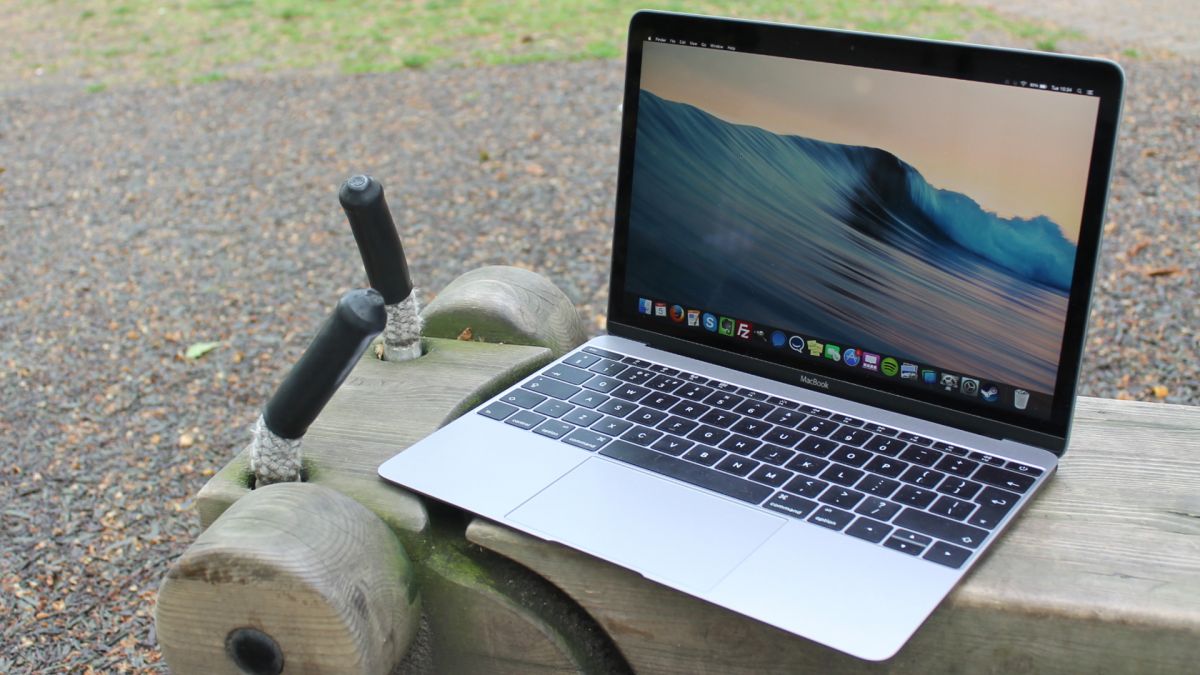
I actually found that, when using it from day-to-day, the new MacBook felt more responsive overall than my 2014 MacBook Air, which is likely down to it having 8GB of RAM, rather than the MacBook Air’s 4GB. On the other hand, tasks that required the MacBook to do any sort of heavy lifting, such as using Gimp to scale the 60MB (or so) images that I took for this review up or down, took anything from 10 to 15 seconds longer than the Air.
Given that editing images is a vital but infrequent task that I need to carry out, the longer scaling and export times were well worth the trade off to get the new MacBook’s svelte build and impressive display.
Plus, since using Mac OS X 10.11 El Capitan on the latest MacBook Air compared to Yosemite, I find it to perform much better. So, you should have an all-round much smoother MacBook if you’ve yet to plunk down for Apple’s new hotness.
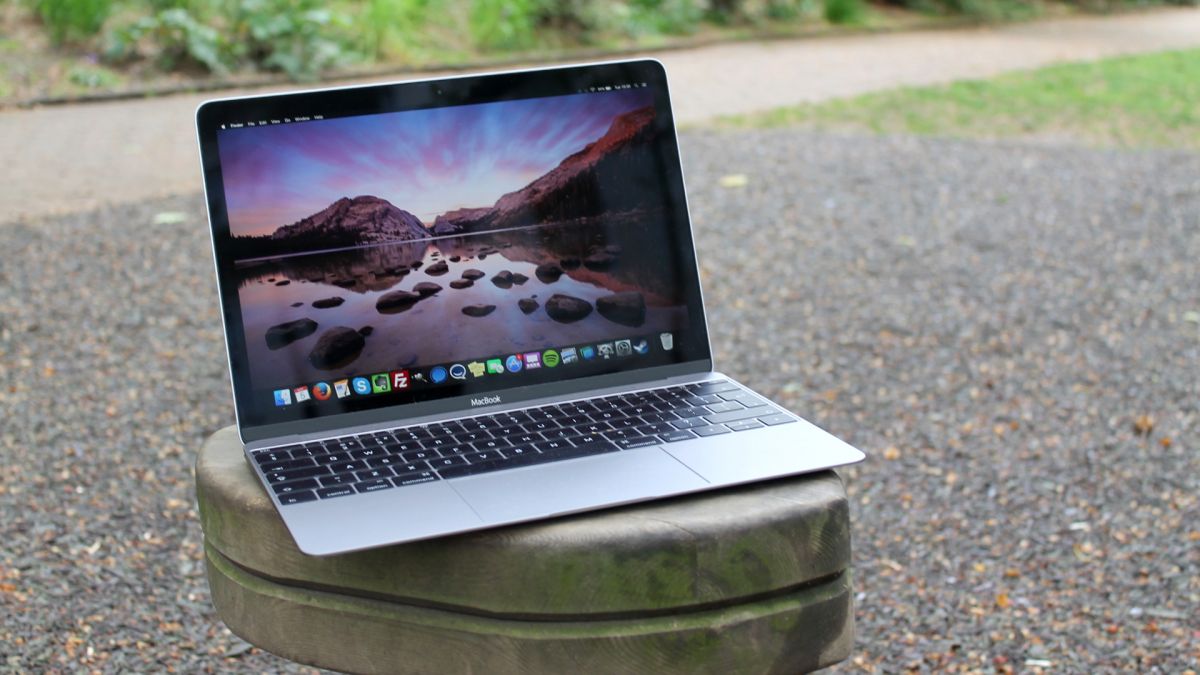
Benchmarks
- Xbench: Overall: 314.66; CPU: 202.72
- Cinebench R15 (CPU) Single Core: 98cb; Multi Core: 209 cb; Open GL: 19.05 fps
- Unigine Heaven 4.0 Medium Quality (1,680 x 1,050): Score: 219; FPS: 8.7
- Unigine Heaven 4.0 Ultra Quality (1,680 x 1,050): Score: 153; FPS: 6.1
- NovaBench: Score: 500; Graphics: 29
- Batman: Arkham City: Minimum 13 , maximum 25, average 19, 1440 x900
- Tomb Raider: Medium quality, minimum 6fps, maximum 11.7, average 8.7
- Geekbench 3 (Single Core): 2,299; (Multi Core): 4,423
- Battery life (looping HD video over Wi-Fi, three-quarter brightness): 7 hours and 5 minutes
But make no bones about it: the new MacBook is no powerhouse, and that’s reflected in the benchmarks. With a Geekbench 3 score of 4,423 on the Multi-Core test, its CPU came out 46% slower than the dual-core 2.7GHz Core i5 chip in the early 2015 Retina MacBook Pro.
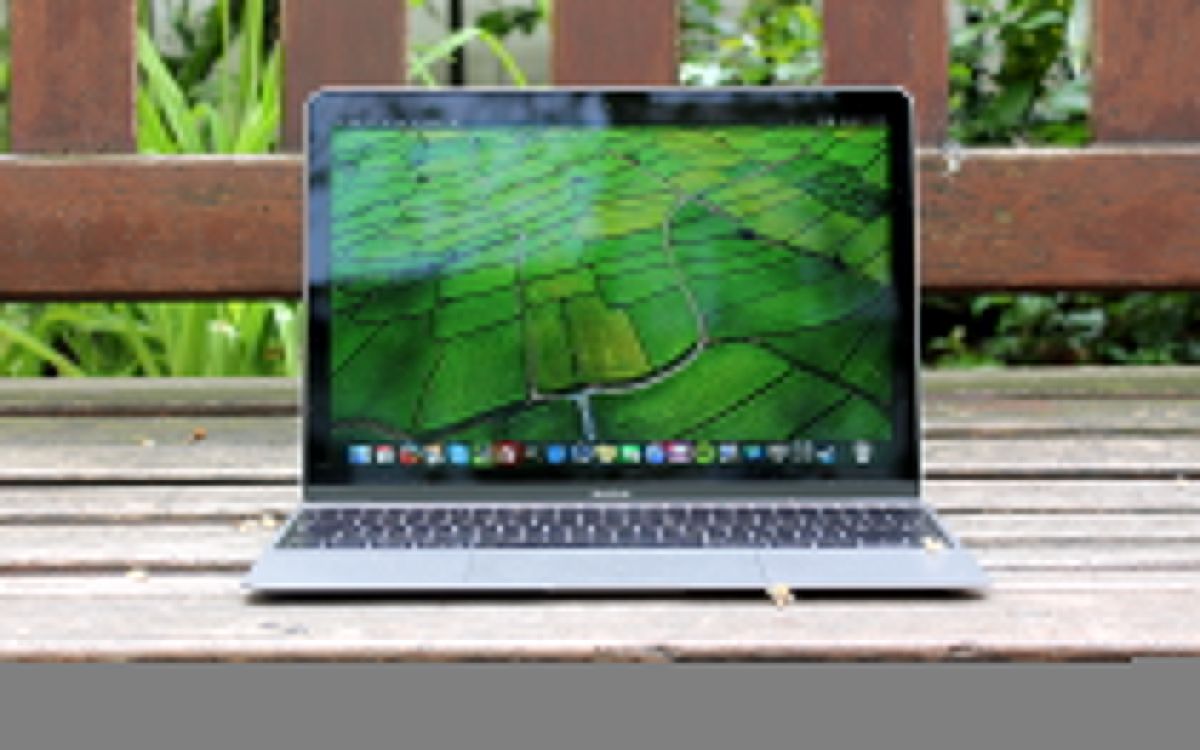
While that may not come as a huge shock, it was also soundly beaten by the top-end 11- and 13-inch MacBook Air models from earlier this year, which attracted an average Geekbench user score of 8,947 and 6,828, respectively. If you’re looking to use a MacBook for regularly editing image files or editing or converting video, those MacBook Airs both cost less than the new MacBook and would be far more suitable while remaining plenty portable.
The new MacBook’s graphical grunt was nowhere to be found due to the inclusion of Intel’s integrated graphics. Both Batman: Arkham City and Tomb Raider mustered low frames per second scores that would make either game unplayable.
Display
Here it is: the highlight of the new MacBook. The display is one of the best I’ve seen on a notebook, with incredibly rich colors and excellent 170-degree viewing angles.
Measured with our X-Rite colorimeter, it notched up a brightness level of 375.15cd/m2, which easily proved bright enough to see indoors and was just about good enough to read websites in bright sunlight too – even if videos were a little harder to follow.
Elsewhere, the MacBook produced decent black levels of 0.33 cd/m2 black levels, with color accuracy standing at 91.3% of the sRGB color gamut. While it’s not quite high enough for media professionals, you probably won’t notice the difference. The display’s inky blacks and bold colors make text and images ‘pop’ on the impressive display – and once you’ve seen it, it’s so, so hard to go back to a MacBook Air.

There’s another advantage to that 2,304 x 1,440 pixel-resolution display: you can scale it up to get more desktop space and go far beyond Apple’s default scaled resolutions.
By adding a custom resolution, I managed to soar all the way up to 1,920 x 1,080 in High-DPI mode using SwitchResX, which allowed me to see the same amount of spreadsheet rows and columns as a 27-inch monitor. Sure the text was tiny, but I could still make out the numbers and edit the spreadsheet without any trouble.
I might not be doing it all the time, but compared to my old setup, which was an 11-inch MacBook AIr connected to a portable USB DisplayLink monitor, I now have enough desktop real-estate to switch to see more on the screen at the same time. Sure, that’s been possible on high-resolution Windows and Apple machines for some time, but having all that desktop space is even more impressive on a 12.1-inch machine as thin as a pencil.
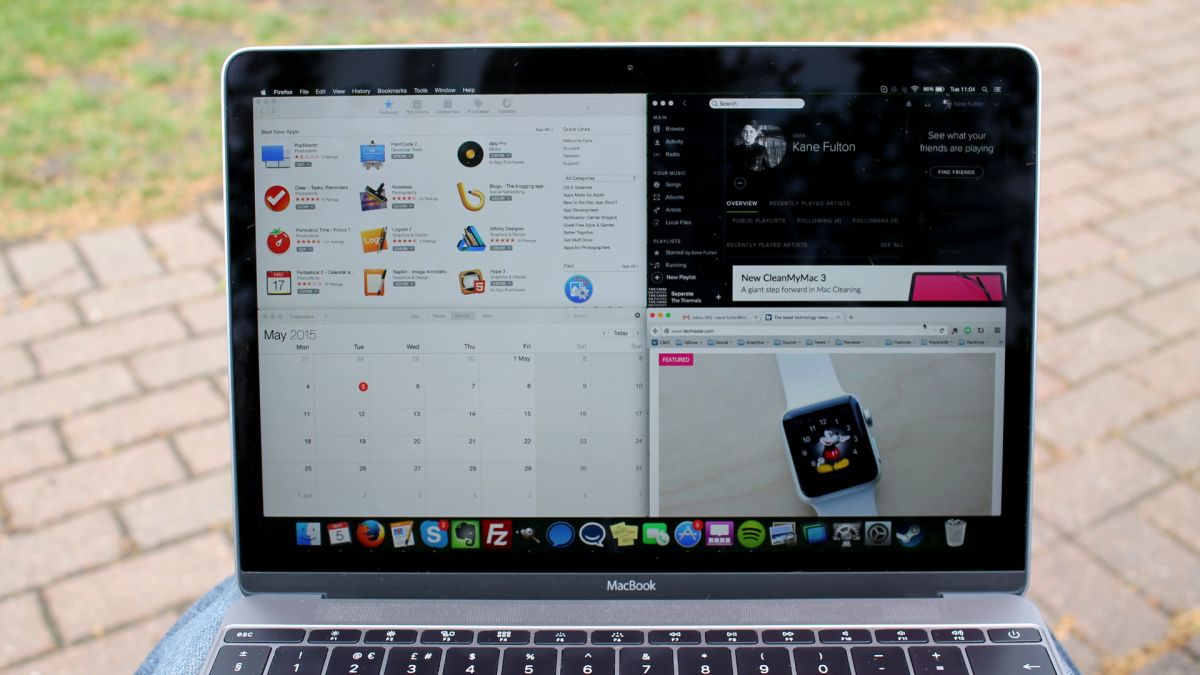
The new MacBook’s stereo speakers are one the of the surprising highlights of the new MacBook. It’s incredible what Apple has managed to do in that department. Located on the top of the base under the bezel, they’re pleasingly punchy with good mid-range tones, even if the bass is predictably lacking. They’re loud, too, for the size – and sound far better than the 11- and 13-inch MacBook Air’s comparatively tinny speakers.
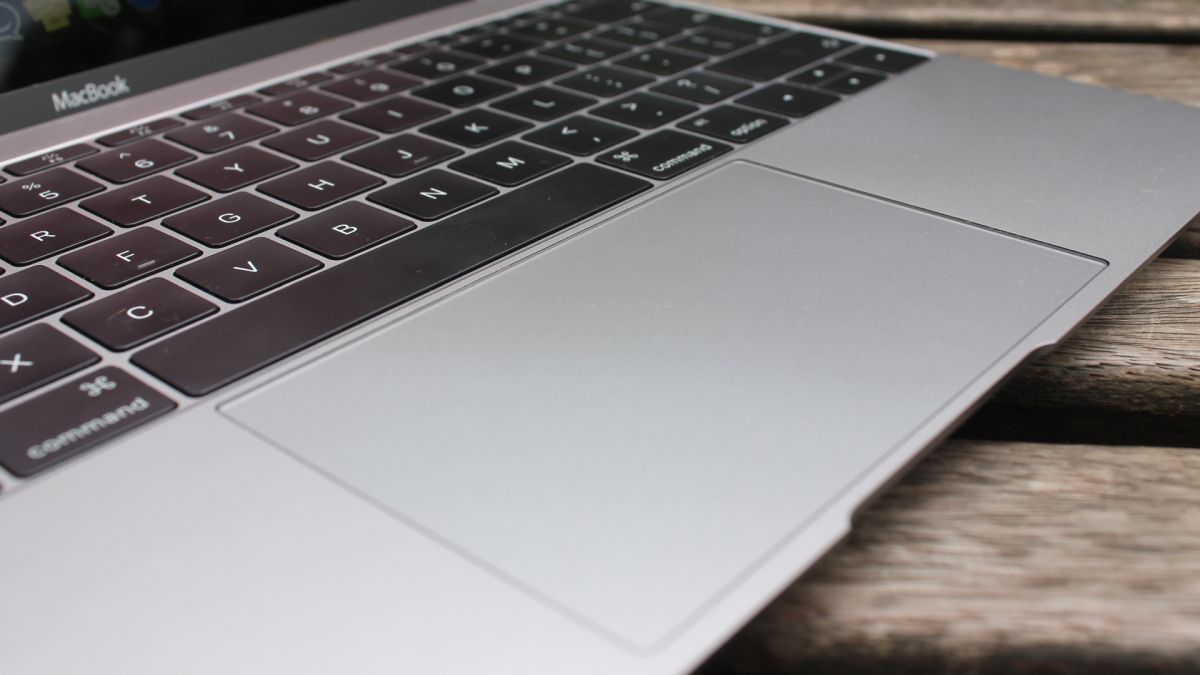
The new MacBook uses a new Force Touch trackpad that adds an extra click using haptic feedback. That means there’s no mechanical construction under the trackpad, instead using haptic feedback to let you indicate where about on the trackpad the click takes place.
Initially I found that the larger trackpad size actually made me accidentally miss the right-click zone more often than I did on the 11-inch MacBook Air (which was never). However, after some practice I soon got used to the larger trackpad, which has tons of potential once developers get to grips with Yosemite’s Force Touch Trackpad API (or application programming interface).
The new MacBook has good, but not excellent battery life, eking out 7 hours and 5 minutes from its 39.7Wr battery on our looping video test over Wi-Fi. That’s not quite post-Haswell MacBook Air levels of battery life longevity, but it isn’t far off Apple’s older Ivy Bridge models. Still, that Retina display has to draw oodles of power from somewhere, and if you need the best battery life in a MacBook you can get, the new MacBook is not the way to go.
Keys to the heart
Apple has completely redesigned the new MacBook’s keyboard, which now uses a new Butterfly hinge rather than the scissor switch under each key. The keys are still backlit, only now they have individual lighting zones that prevents light from bleeding between the keys – and you get fewer crumbs dropped between them, too.
The changes make the keyboard by far the most divisive feature of the new MacBook – and it took me a week to get fully used to it after using an 11-inch MacBook Air for five years.
Initially I couldn’t quite type as fast as I could on the MacBook Air, but the reduced amount of pressure needed to make each key actuate makes the New MacBook’s keyboard slightly more comfortable for typing on for hours at a time. Like me, once you get used to it, you’ll find yourself flying.
Verdict
The New MacBook is the future, but it isn’t for everyone just yet. The lack of USB ports and the need to buy an adapter (if you have peripherals and a monitor) will likely be the first deal-breaker, followed by its price. If you’re still onboard after those potential pitfalls, the new MacBook is one of the most luxurious, compact and fun notebooks to use today.
We liked
After witnessing the Retina MacBook Pro’s display, it was always likely that the new MacBook would have a stunning display – and it doesn’t disappoint. Great viewing angles and bold colors make it one of the best we’ve seen in a laptop. It’s all part of a brilliantly portable package that’s the closest a laptop has come yet to offering the portability of a tablet (well, an iPad).
The new MacBook’s speakers gave surprisingly full-bodied sound that won’t shake the room but make for a far more pleasant listening experience than Apple’s previous MacBook Air or MacBook Pro models. While many will sit on the fence when it comes to the keyboard, my experience with it only got better in time – and I ended up preferring it to the MacBook Air’s after almost two weeks.
It’s a similar scenario with the Force Touch Trackpad, which felt a little alien at first but became more comfortable over time.
We disliked
The new MacBook is far from a monster under the hood. However, if you can get over the fact that it’s designed for anything from browsing the internet to light image editing, streaming video and music to other light computing tasks, it should perform OK for what you want it to do.
Bear in mind that you will need to pay for at least one of several USB Type-C adapters out there to use your existing peripherals and monitors. Some say that’s just the price to pay for being an early adopter, but it could be hard for you to stomach considering its already high starting cost.
Final verdict
The decision of whether you should buy a new MacBook is a simple one: does it play to your strengths? Perhaps you need the lightest and most portable OS X machine out there today, one with good battery life. Maybe you appreciate an incredible, vibrant display that’s equally as good at rendering your crisp documents as it is displaying the same amount of a spreadsheet as a 24-inch monitor.
Maybe, just maybe, you travel a lot and play music out of your laptop’s speakers. But – and it’s a big but – you need to be prepared to put up with its pitfalls. Don’t expect to crunch through major multitasking without slowing down. And you may end up merely coping with its keyboard rather than falling in love with it. You’ll definitely have to put up with at least one adapter if you want to use any peripherals or an external monitor.
Like in any relationship, the one between you and your MacBook will be fraught with compromises. But if it’s meant to be, then you will be prepared to make them. If you’re not, you can always take it back to the Apple store to save yourself a messy divorce. In other words: if possible, try before you buy.












































I have used Macbooks, Yogas, and Sufaces and I find the quality of Surface and Macs about the same and Yogas not too far down. Each have their features such as the Mac with better touchpads, the Surface with its stylus, the Yoga with its easy flip form.
well that happens cut most folks are clueless!
I know you said it doesn't work as well with a heavier workload. Does that include things like running mathematica or downloading video files?
So, I actually took a gamble and picked up the MacBook. After 6 failed Microsoft Surface 4's, I had to get something that worked. The Surface would have been ideal if the hardware would not fail. To my surprise, this MacBook has performed better than expected. The screen is exceptional and it can edit video in FCP, Adobe Premiere, as is quite capable of running Photoshop, Matlab, and Windows via Fusion. This machine will not set any records, but that is my intended purpose of the machine. For bigger tasks, I have an iMac to handle those tasks. This is a good example of how a core-m can work well. I use this for travel and business. All in all, this is a great device and you can pick one up for around 1149.
Lets get the facts straight: removing magsafe was just an idiotic move and proves, that Apple is losing it. Bringing USB-C without existing USB-C ecosystem is again a proof that Apple is losing it.
I might be an appleboy, loving iPhone6, having Air and MBP but still – Apple is losing their shit and Im concerned.
I do. Had both the SP3 and the Surf 3. Returned them both. Neither one is a bonafide laptop with that floppy keyboard and tiny trackpad. Neither one is a tablet with the huge hole in TOUCH apps that a tablet needs. NOT windows desktop software to navigate on tiny resolutions. The Surface failed to qualify as a laptop or a tablet for my use.
The Macbook via Yosemite can talk to ALL phones and text etc. This is a big deal. It can also have Windows 8 on it seamlessly with Parallels. It is a big deal. Chargeable via any power bank. Awesome deal. Support from a real store rather than shipping items around. A plus as well. Timeline hassle free backup for complete peace of mind. Lack of time spent dealing with drivers, viruses, malware, forced updates and reboots…kinda nice as well.
for what the Core M machines are built for (web, video, light typing etc) there's not much need for power, sides if you need power the base MacBook pro is more or less the same price
Dear "hohopig"….. From a very happy "iSheep"…. Go back to your trough and get the flock outta here! Sheeps safely graze while the rest are devoured by wolves (viruses/crappy operating systems/viruses/abandonment/crappysoftwarethatyoucantupgradeormigrateorown/ oh yeah, viruses) ….. Baaaaaaaaaaaa (<<<<< sound a happy productive sheep makes). You are gluttons for punishment.
If you use anything such as logic pro X… then fair enough thats the sole reason I own a Mac at all but if you need a work laptop, home laptop or gaming laptop. your best bet is anything else but a mac. I love the look and feel and easiness of my mac but if logic came out for windows id probably convert.
Using a Mac or Windows computer? Heres some advice: don’t freak out if it starts going slow sometimes. It’s 100% annoying 100% of the time, but most Mac's and PC's can be easily made like new again. TechRadar recommends the software available on FASTCOMPUTER.INFO – this will make any PC or Mac run like new again and maintain its performance for you. Just stay on top of that clutter!
The TechRadar Staff
Wow did you really just use the term "isheeps"? You're pretty darn clever!
I personally think this has to be one of the best laptops ever created. Thin, light, ultra-portable – sure, it has its problems, but Apple didn't create the Macbook so that EVERYONE would buy it. If you need more processing power, get an Air or a Pro. The new Macbook is for people who need to be portable. Really portable.
I'm looking to buy my first Mac, my job requires something light that I can put Office 2013 onto, but I'd also like to be able to watch Netflix on it. Ideally I would love to wait and see what Air 2016 is going to be like, but if I have to, would the new Macbook be fine for my needs, or should I go for an Air?
* I won't be using it for gaming, heavy editing etc.
The MB runs OS X.
Conversation over.
Even if someone had money to waste, there are much better things that one can waste money on.
Hey look, two people having a reasonable discussion on the internet!
Lol. Optical drives ARE dead for 95% of people. I have an external one that's been used maybe twice in 2 years. Automatic wireless backup of my entire Mac every time i come home.
If you continue to support legacy connectors indefinitely, people will never move from older USB devices to USB-C. If Windows OEMs had their way, we'd probably still have floppy disk drives (not to mention optical drives) on everything.
They shaved off considerably more than 1mm, and it has a better screen. It's a pretty fantastic machine, and no amount of trolling on random websites can change that.
IDK, that UX305 looks very nice. The Macbook will have better resell value though.
Its the CPU that will bottle neck any of these M class machines.
Resale value – is that what its all about? Fuksake…
Just keep on living in 90's please.
Looking to speed up and optimize your Mac? To help your computer run at its best, TechRadar recommends: Detox My Mac (for an exclusive Tech Radar promotion on this miracle software, visit TINYURL.COM/TECHRADAR6 )
This software will make your computer run like new again and increase its speed by clearing out basic clutter. If you're tired of seeing the rainbow wheel a lot and want a longer battery life and a faster Mac, this is for you!
The TechRadar Team
For notebooks of similar size, construction, speed, memory, and hard drive, it is actually underpriced.
I would perform some routine maintenance instead of downloading software as such mentioned, verify your permissions in disk utility and remove any software you don't use, check your network connections and processes in activity monitor, there are good tools out there but a little common sense often prevails
This laptop is being dismissed too fast on face value. I did that as well initially until I revisited my needs for a small portable laptop with long battery life that talks to my personal devices as well as my work needs.
Here are the important aspects for me.
1) Getting to use the Mac OS in a small retina form factor and using the power of Yosemite to send and receive messages and calls on the laptop as needed. Most of my employees etc have iPhones (although the texting works for non iPhones as well)
2) Able to run Windows 8 seamlessly with Parallels makes it OS-proof for any Windows centric programs I might need
3) All day battery and the ability to charge via any standard power bank
4) The support of a local Apple Store if needed
5) Super light and thin form factor.
6) I have my entire work PC hosted in the cloud by my company and run it flawlessly via the standard VMWARE app. Simply by flicking right or left I can enter into Work or Personal mode. Another flick and I can have Windows 8 running on a separate desktop as well
7) The ports are not as big a drawback if you are looking for small form factor and know the compromises. Amazon is full of USB-C to USB mini adapters for $10 and the Apple one offers HDMI and USB on one adapter. The Surface only has one USB so not sure why the big ruckus is to compare the two based on ports. The Surface is NOT a laptop for regular use. The floppy keyboard and tiny keyboard and tiny trackpad severely limit productivity on the go and requires a dedicated workspace due to the stand and floppy keyboard. The Surface is also no match as a tablet since it well has no TABLET apps…just regular windows programs that are a pain to use without the touch interface needed for tablet use.
Bottomline – If you want a small form factor Macbook with retina screen this is the only option. The Air screen's are not great for 2015 standards. The Air 11 only has 2 USB ports and the 8gb/256gb model is only $100 less with a vastly inferior non IPS screen.
A Macbook allows both Mac and Windows usage side by side seamlessly, making it future proof as well. The trackpad has no competitor. The Core M flies for daily tasks with no stutters. Specs are over rated with Macs since they are more tightly integrated and controlled and the experience is not determined by pure number crunching.
I made the circle from Macs to Windows and now I am back to using a Mac. In the process my productivity has soared, multi tasking has been a breeze and the peace of mind of enjoying life rather than worrying about driver issues, viruses, freezes, forced updates, incompatibilities etc typically associated with pure Windows computers does not exist.